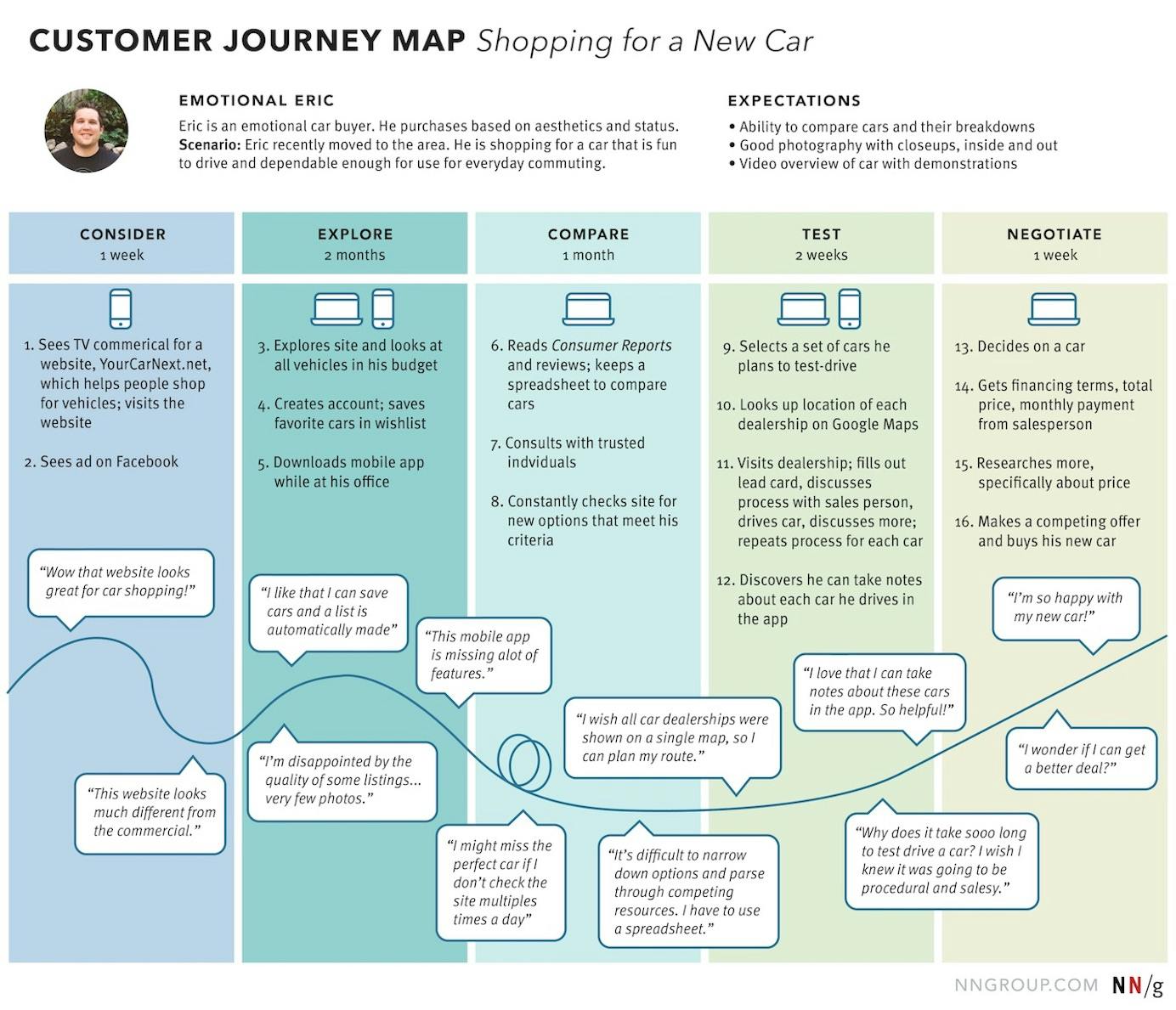- Published on
Using Alex Hormozi's 100m Offers To Solve Design Problems
- Authors

- Name
- Aswin Ranganthan
- @aswinckr
Here's the link to the template
Alex Hormozi, an entrepreneur and YouTuber, has been gaining attention online for his free business advice. He draws from his experience of achieving multiple successful startup exits, and currently runs acquision.com with his wife.
He's also a popular writer, with two Amazon best seller books called "100M Offers" and "100M Leads".
I've read both of his books, and they sparked an idea I've been contemplating for a while.
The Problem
We employ customer journeys to illustrate the various experiences and challenges users encounter while using your product or service.
I've noticed that many portfolios include a customer journey diagram that looks like this -

However, I haven't encountered a clear explanation of how this customer journey is actually applied to develop solutions.
Earlier in my role, I tried making my own versions of it. I did a simple exercise of gathering all the problems. I would then take these issues and use them to offer feedback to designers.
However, unclear understanding how to turn them into solutions made it extremely challenging (and time-consuming) to use them into our designs.
Here's an example:
Users that have encountered issues in past experiences pay more attention to order details and status updates.
Normally, I could discuss this with our product team and raise its priority. I could guide the team to investigate why we face problems, or if issues arise, whether we have everything in order to communicate effectively.
However, when I applied this approach to multiple insights, it resulted in a slew of new tasks being added to the roadmap as separate projects. Since most product teams also have other important goals to meet, it didn't make sense to allocate additional resources for every problem.
We needed to address these problems while our designers were already working on other challenges.
Furthermore, these insights should also serve as a preventative measure to avoid similar problems in the future.
The Solution
When I read through Alex Hormozi's approach, I noticed that it looked a lot like a customer journey.
First, you begin by describing the ideal result for your user. Then, you list the steps your users must follow to achieve it. Within each step, we identify all the issues and beliefs that hinder users from solving the problem.
When it came to generating solutions, this is where Alex outlines the Value Equation, which appears like this -

The equation consists of these components:
- What will I achieve? (Dream Outcome)
- How confident am I that it will happen? (Perceived Likelihood of Achievement)
- How much time will it require? (Time Delay)
- What effort and sacrifices are needed from me? (Effort & Sacrifice)
The objective is to reduce the lower part of the equation (time and effort/sacrifice) to zero. The best companies and products in the world concentrate on this: "making things seamless, immediate, and effortless."
“If you can make the bottom part of the equation equal to zero, you’re golden. No matter how small the top side is, anything divided by zero equals infinity (which is technically undefined for the math nerds). In other words, if you can reduce your prospects' true time delay to receiving value to zero (aka you realize your immediate dream outcome), and your effort and sacrifice is zero, you have an infinitely valuable product. If you accomplish this, you win the game.”
As designers, we focus mostly on both streamlining the process, reducing the number of steps, and ensuring clarity through improved copywriting and information organization.
However, utilizing the value equation opens up several fresh perspectives -
- How can you shorten the perceived time?
- How can you employ copywriting to emphasize the need for minimal effort?
- How can you create interfaces at pivotal moments that reinforce the likelihood of success?
It provides us with a method to prioritize these questions above others, focusing on generating the highest value for our users.
In the example I mentioned earlier:
Users that have encountered issues in past experiences pay more attention to order details and status updates -> How can we improve our error messages through better copywriting to highlight that there will be no disruptions to the order status?
Without this framework, it would have been much more challenging for me to formulate a similar solution statement.
Now I can apply this knowledge to any error message in this part of the journey. With sufficient insights pointing in this direction, I can assume that all error messages should clarify the order status at this stage of the journey.
How to use the template
First, duplicate the template and create a list of all the steps your users need to follow to achieve their objective.
Next, compile a comprehensive list of issues and insights provided by your UX research team, and align them with the corresponding stage of the customer journey.
PRO TIP: You can also employ AI to scan through these documents and automatically generate this information for you.
Once you have this data, you can once again utilize AI to generate initial versions of solution statements for you by applying the value equation. Offer comparable examples, as I provided earlier, to help AI understand how to construct solution statements for your list of problems.
After generating a collection of solution statements, review them and make any necessary revisions. Additionally, include your unique problem statements to enhance the set.
If you're a design manager, this becomes your Objectives and Key Results (OKR). The more you work on it, the better your product's user experience becomes. It's a simple way to make sure that your future design decisions always consider the user experience.